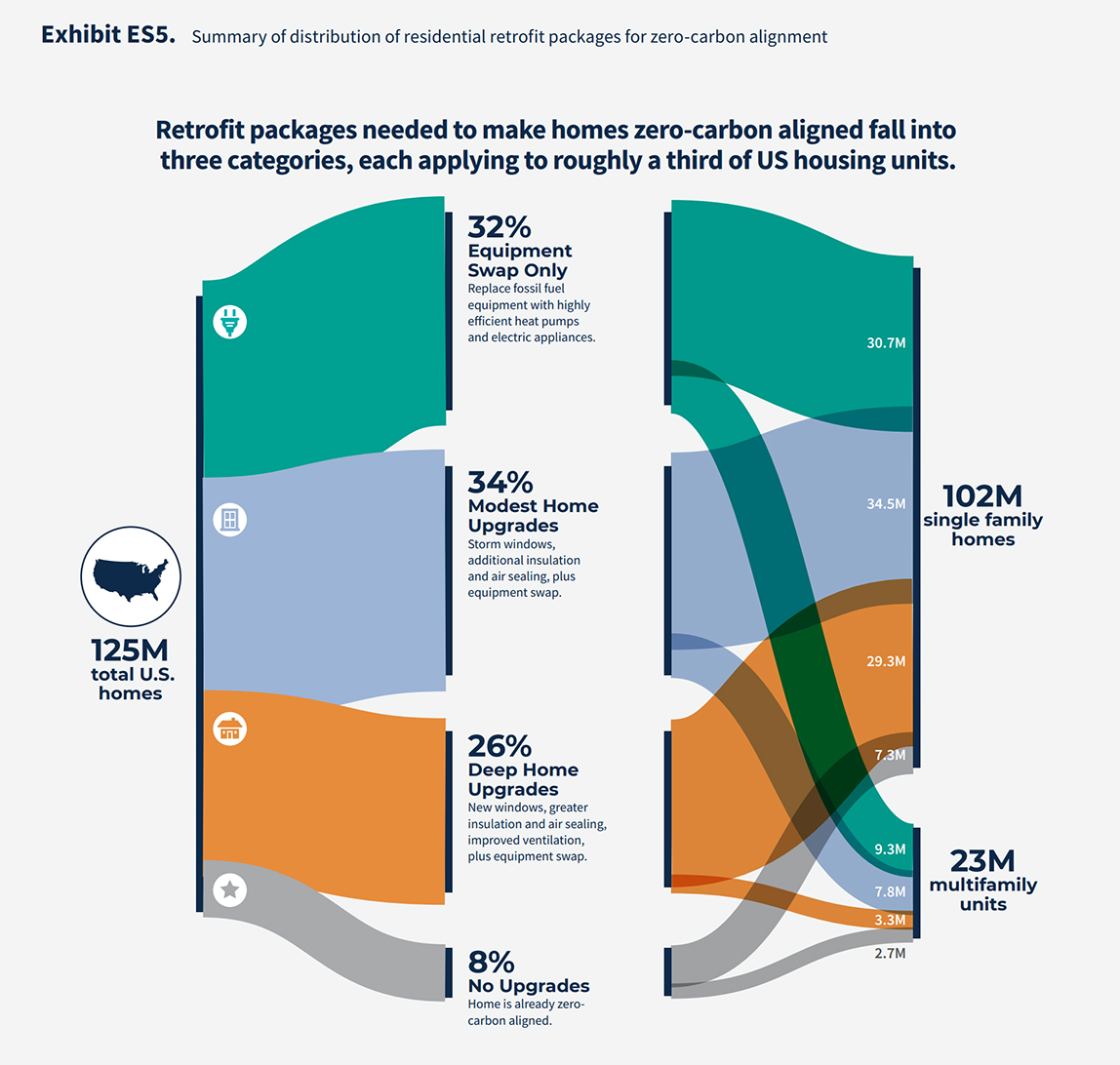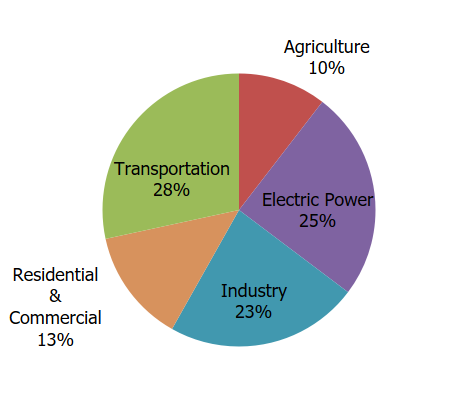Welcome to our explainer series, taking important topics and going deeper!
Why is it important to reduce emissions from buildings?
According to the US Environmental Protection Agency, one-third of carbon emissions in the US can be attributed to residential and commercial buildings. In Princeton, the built environment is responsible for the largest share of greenhouse gas emissions, accounting for around 69% of all community emissions.1 It comes from residential and commercial buildings that use electricity and burn natural gas. Additionally, there is a nationwide housing shortage, particularly for affordable housing. New Jersey, already one of the most expensive states to live in, needs more than 214,000 low-rent homes to meet the state’s demand.2 However, the construction sector is a huge contributor to global emissions. Between the need for more housing and the need to decarbonize new and existing buildings, the path forward is a bit difficult to navigate, though there is some progress in coming up with solutions.
What is a zero emissions building?
The U.S. Department of Energy has introduced a preliminary definition for “zero-emission buildings.” These buildings aim to improve public health, lower energy costs, and help protect the climate. This definition sets minimum criteria that both public and private entities can adopt, and it is not a replacement for existing green building and energy efficiency standards.
Key points about zero emissions buildings
When talking about buildings, there are two types of emissions: operational and embodied. Operational emissions are those produced while a building is in use and include heating and cooling. Embodied emissions come from the materials used to build the structure, from extraction, production, and transportation. Future definitions will address embodied emissions, as they are expected to account for half of new construction emissions by 2050.3

For a building to meet the DOE definition of a zero emissions building4, it has to meet three main criteria.
- Three Main Criteria:
- Energy Efficiency: Buildings must be among the most energy-efficient in their category. Existing buildings must meet one of these criteria
- Achieve an ENERGY STAR score of 75 or higher.
- Use at least 35% less energy than similar buildings.
- Meet specific energy use standards outlined by building performance regulations.
- New buildings must satisfy at least one of these criteria
- Estimated whole building energy use, reflecting as-built condition, is at least 10% lower than the model code;
- Designed to achieve an ENERGY STAR score of 90 or higher; or
- Certified to the most recent effective version of the ENERGY STAR Residential New Construction program or Zero Energy Ready Homes program.
- No On-Site Emissions: Buildings should not produce direct greenhouse gas emissions from energy use.
- Clean Energy Only: All energy used must come from clean sources, both on-site and off-site.
- Energy Efficiency: Buildings must be among the most energy-efficient in their category. Existing buildings must meet one of these criteria
Why does it matter?
Zero-emissions buildings will someday be the norm, but it is a long-term goal. Still, right now, many buildings can meet these standards in a cost-effective way, especially with incentives like those within the Inflation Reduction Act. Meeting these definitions can draw in funding from investors and real estate leaders aiming for a zero-emission building sector by 2050. For existing buildings, fewer than 1% are retrofitted each year, and often it can be cost-prohibitive to do so. When it comes to homes, only about one in three of them could reach zero emissions simply by swapping out equipment. Rebates, credits, and low-cost financing are essential for the necessary upgrades and larger improvements to appeal to homeowners.5
With federal and state plans trying to push for cleaner energy and ambitious climate goals, there is a lot of potential for both public and private funding. Firms are more likely to start catching up to climate goals, reducing risk, and easing the transition to zero-emissions and transparency requirements.
What can you do?
Here in Princeton, plenty of neighbors have already been active in electrifying and decarbonizing their homes and lifestyles. This leads to healthier environments, lower energy costs, and a sustainable future. By focusing on energy efficiency, eliminating on-site emissions, and using only clean energy, we can make significant strides toward a healthier planet. For inspiration, check out our People Empowering Princeton series and website for more resources! You can also stay tuned for New Jersey’s soon-to-be-released New Construction Energy Efficiency Program, which has the long-term goal of transforming the new construction market in NJ to one in which most new buildings will have “net zero” energy usage.6
Want to learn more?
We will be sharing our explainers every month. If there are topics you’d like to know more about, please email info@sustainableprinceton.org.
- https://www.epa.gov/ghgemissions/sources-greenhouse-gas-emissions#:~:text=Commercial%20and%20Residential%20(13%25%20of,as%20the%20handling%20of%20waste. ↩︎
- https://nlihc.org/housing-needs-by-state/new-jersey ↩︎
- https://rmi.org/abundant-affordable-climate-friendly-homes-what-part-1-of-the-national-definition-of-a-zero-emissions-building-means-for-housing/ ↩︎
- https://www.energy.gov/eere/buildings/articles/national-definition-zero-emissions-building ↩︎
- https://www.bloomberg.com/news/articles/2024-06-06/zero-emission-buildings-biden-hopes-to-create-a-standard-industry-definition ↩︎
- https://njcleanenergy.com/commercial-industrial/new-construction-buildings
↩︎



